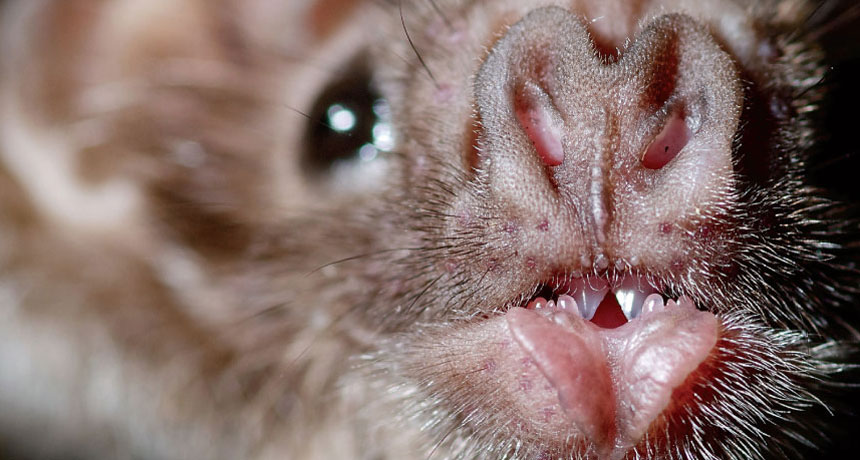Vampire reality check

LICK NOT SUCK Real vampires don’t suck. The leaflike front of a common vampire bat’s nose senses the blood heat of a capillary-rich spot to bite, and its sharp teeth nick the flesh. As blood flows, the vampire quietly licks.
Toby Thorne/Flickr





